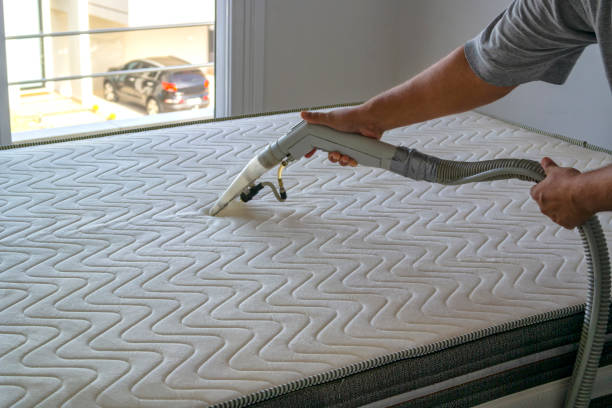A clean mattress is essential for a healthy home environment, particularly in a bustling city like New York. Mattresses accumulate dust, allergens, bacteria, and even mold over time, which can impact sleep quality and overall well-being. Steam cleaning is one of the most effective ways to deep clean a mattress, but many NYC homeowners wonder how often they should do it.
This guide will explore expert advice on mattress steam cleaning frequency, benefits, and the best practices for keeping your sleeping surface fresh and hygienic.
Why Steam Clean Your Mattress?
Steam cleaning uses high-temperature vapor to penetrate deep into mattress fibers, effectively eliminating bacteria, dust mites, and stubborn stains. Unlike chemical cleaners, steam cleaning is eco-friendly and safe for people with allergies or sensitivities.
Key Benefits of Steam Cleaning Your Mattress:
- Eliminates dust mites and allergens that can trigger respiratory issues.
- Removes stains and odors caused by sweat, spills, and body oils.
- Kills bacteria, viruses, and mold to ensure a hygienic sleeping surface.
- Extends the lifespan of your mattress by keeping it in top condition.
- Improves indoor air quality by reducing airborne pollutants.
How Often Should You Steam Clean Your Mattress?
The recommended frequency for steam cleaning your mattress depends on several factors, including lifestyle, health concerns, and environmental conditions. Below is a general guideline based on expert recommendations:
1. General Recommendation: Every 6 Months
For most households, steam cleaning your mattress every six months is sufficient to maintain cleanliness and hygiene.
2. High-Allergy Households: Every 3-4 Months
If you or your family members suffer from allergies or asthma, consider steam cleaning every three to four months. Dust mites and allergens accumulate faster in urban environments like NYC, where pollution and humidity levels fluctuate.
3. Homes with Pets: Every 3 Months
Pet dander, fur, and accidents can make mattresses dirtier more quickly. Steam cleaning every three months helps remove pet-related allergens and odors.
4. If You Sweat Heavily or Have Night Sweats: Every 2-3 Months
Excessive sweating can lead to moisture buildup, making mattresses a breeding ground for bacteria and mold. More frequent steam cleaning ensures a fresh and hygienic sleep environment.
5. Post-Illness Cleaning: Immediately After Recovery
If you or a family member has been sick, steam clean the mattress immediately after recovery to eliminate lingering bacteria and viruses.
Best Practices for Steam Cleaning Your Mattress
To achieve the best results, follow these expert-recommended steps for steam cleaning your mattress:
1. Vacuum First
Before steam cleaning, vacuum the mattress thoroughly to remove loose dust, pet hair, and debris. Use a vacuum with a HEPA filter for maximum effectiveness.
2. Spot-Treat Stains
Pre-treat any visible stains with a mild cleaning solution or a mixture of baking soda and water. Let it sit for 10-15 minutes before blotting with a damp cloth.
3. Use a High-Quality Steam Cleaner
Invest in a steam cleaner designed for upholstery and mattresses. Ensure it reaches a temperature of at least 212°F (100°C) to kill bacteria and dust mites effectively.
4. Avoid Over-Saturating the Mattress
Excess moisture can lead to mold growth. Use short bursts of steam and allow the mattress to dry completely before covering it with sheets.
5. Let the Mattress Dry Completely
After steam cleaning, place the mattress in a well-ventilated area or use a fan to speed up drying. It should be completely dry before putting on fresh bedding.
Additional Tips for Keeping Your Mattress Clean Between Steam Cleanings
In addition to regular steam cleaning, follow these maintenance tips to keep your mattress fresh:
- Use a Mattress Protector: A waterproof, hypoallergenic cover prevents spills, dust, and allergens from penetrating the mattress.
- Rotate and Flip Your Mattress: Every three to six months, rotate or flip your mattress (if applicable) to ensure even wear and prevent sagging.
- Wash Bedding Regularly: Wash your sheets, pillowcases, and blankets at least once a week to minimize dirt and allergen buildup.
- Air Out Your Mattress: Allow your mattress to breathe by leaving it uncovered for a few hours each week.
- Control Humidity Levels: Use a dehumidifier to prevent excess moisture, which can lead to mold and mildew growth.
When to Consider Professional Mattress Cleaning
While DIY steam cleaning is effective, professional mattress cleaning Brooklyn services in NYC offer advanced techniques for deeper sanitation. Consider hiring a professional cleaner if:
- Your mattress has deep-set stains or persistent odors.
- You experience frequent allergy flare-ups despite regular cleaning.
- Your mattress is over five years old and has never been professionally cleaned.
- You want a specialized treatment, such as anti-microbial or UV sanitation.
Choosing the Right Mattress Cleaning Service in NYC
If you decide to hire a professional, look for these qualities in a mattress cleaning service:
- Eco-Friendly Cleaning Methods: Ensure they use non-toxic, chemical-free solutions.
- Experience and Reviews: Check online reviews and ask for recommendations.
- Transparent Pricing: Avoid hidden fees by requesting a detailed quote upfront.
- Quick Drying Time: Choose a company that guarantees fast drying to prevent mold issues.
Conclusion
Regular steam cleaning is an essential part of maintaining a clean and healthy mattress. For most NYC homes, a biannual cleaning schedule is sufficient, but high-allergy households, pet owners, and those who sweat excessively may need more frequent treatments. By following best practices and considering professional mattress cleaning Brooklyn services when necessary, you can extend the lifespan of your mattress and enjoy a fresher, healthier sleep environment.
For NYC homeowners looking to invest in better sleep hygiene, prioritizing mattress steam cleaning can lead to noticeable improvements in air quality, comfort, and overall well-being.
Also Read: Moth Damage on Rugs: Prevention, Treatment, and Repair – Guide for Brooklyn
